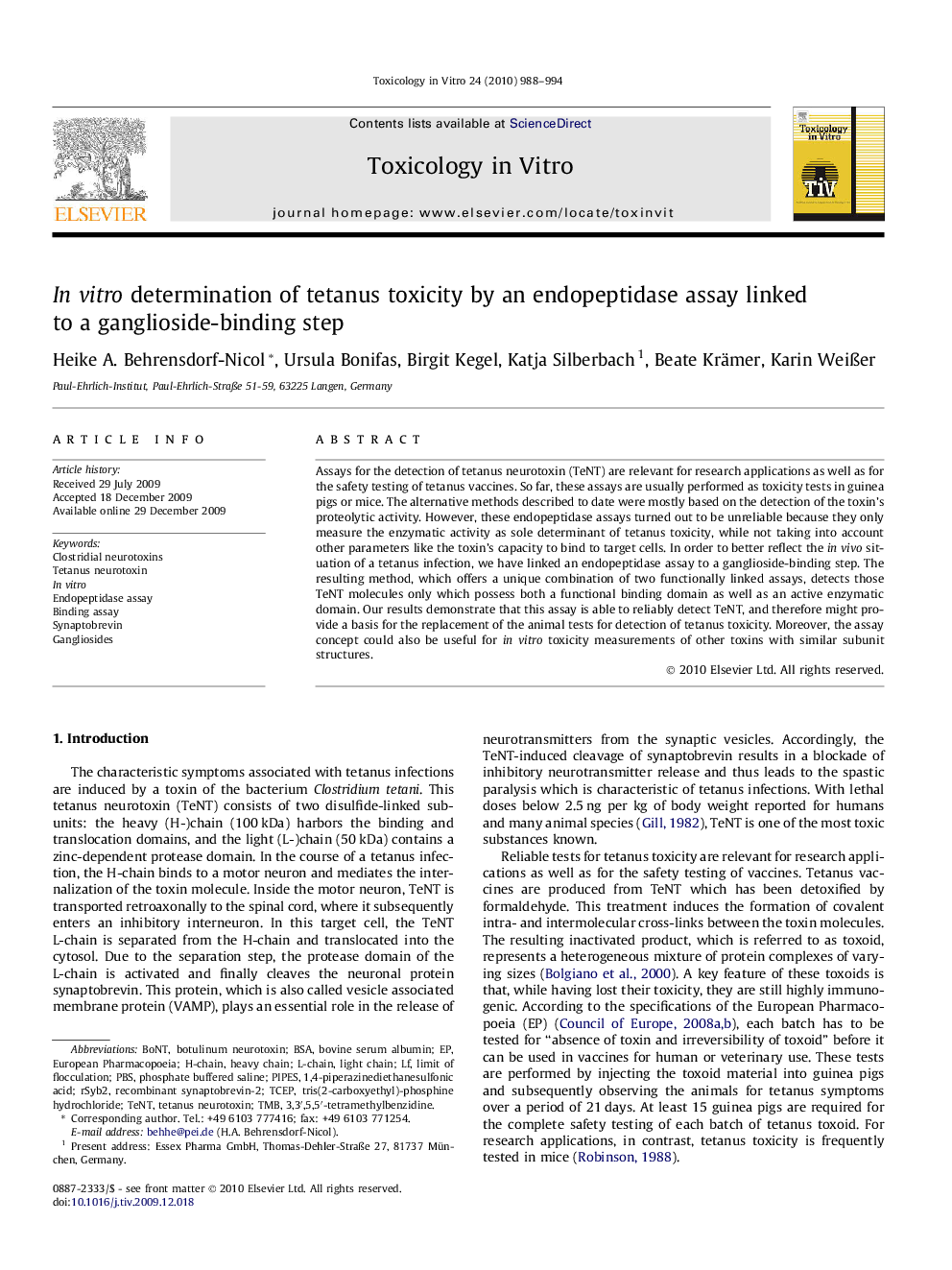| Article ID | Journal | Published Year | Pages | File Type |
|---|---|---|---|---|
| 2602960 | Toxicology in Vitro | 2010 | 7 Pages |
Abstract
Assays for the detection of tetanus neurotoxin (TeNT) are relevant for research applications as well as for the safety testing of tetanus vaccines. So far, these assays are usually performed as toxicity tests in guinea pigs or mice. The alternative methods described to date were mostly based on the detection of the toxin's proteolytic activity. However, these endopeptidase assays turned out to be unreliable because they only measure the enzymatic activity as sole determinant of tetanus toxicity, while not taking into account other parameters like the toxin's capacity to bind to target cells. In order to better reflect the in vivo situation of a tetanus infection, we have linked an endopeptidase assay to a ganglioside-binding step. The resulting method, which offers a unique combination of two functionally linked assays, detects those TeNT molecules only which possess both a functional binding domain as well as an active enzymatic domain. Our results demonstrate that this assay is able to reliably detect TeNT, and therefore might provide a basis for the replacement of the animal tests for detection of tetanus toxicity. Moreover, the assay concept could also be useful for in vitro toxicity measurements of other toxins with similar subunit structures.
Keywords
PBSH-chainL-chainGangliosidesBoNTTeNTTMB1,4-piperazinediethanesulfonic acid3,3′,5,5′-tetramethylbenzidineBSAbovine serum albumintetanus neurotoxinBinding assayIn vitrolight chainheavy chainTCEPSynaptobrevinEuropean PharmacopoeiaPhosphate buffered salinePipesBotulinum neurotoxinClostridial neurotoxins
Related Topics
Life Sciences
Environmental Science
Health, Toxicology and Mutagenesis
Authors
Heike A. Behrensdorf-Nicol, Ursula Bonifas, Birgit Kegel, Katja Silberbach, Beate Krämer, Karin WeiÃer,
